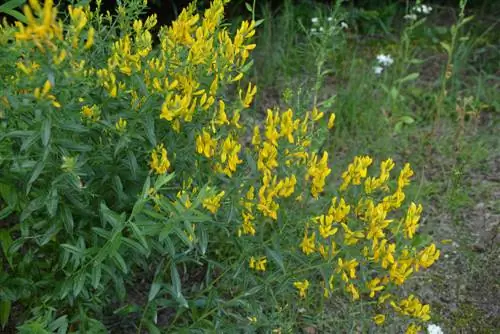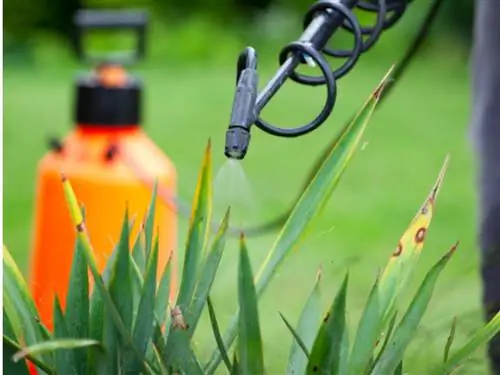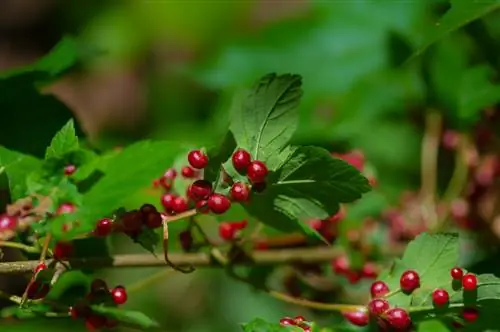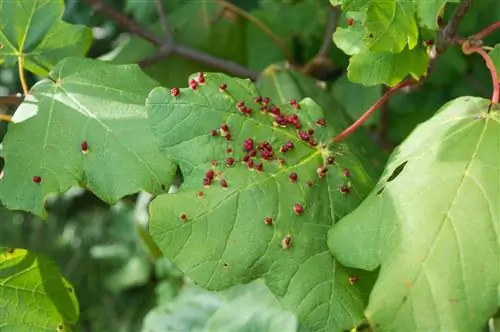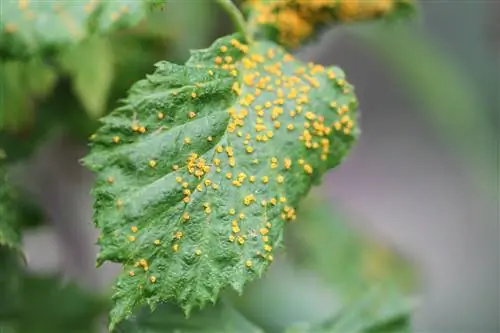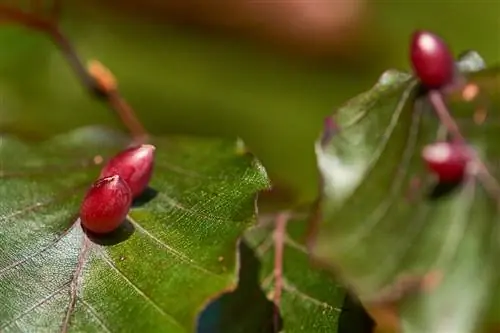- Author admin [email protected].
- Public 2023-12-16 16:46.
- Last modified 2025-01-23 11:22.
Gall mites are cheeky little arachnids that also like to help themselves to the cell sap of broom bushes. But can this lead to diseases in the attractive butterfly family? We'll answer that for you in this article.
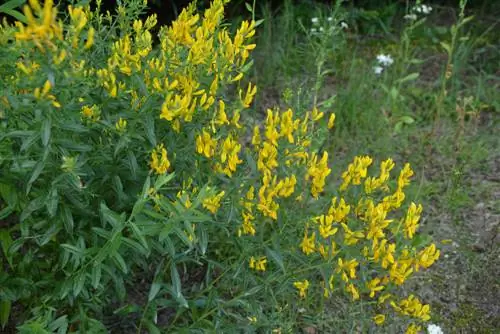
Can gall mites cause diseases in broom?
Gall mites can cause protuberances in gorse, but do not usually lead to disease in these plants. They are considered more of a nuisance than a pest. To combat an infestation, remove affected branches or use natural enemies such as predatory mites.
Can gorse suffer from diseases caused by gall mites?
Not everyone finds the characteristicprotrusionsthat gall mites cause by sucking out plant cells and their saliva to be pretty to look at. However, the behavior of the animals in gorsedoes not normally lead to any diseases In this sense, at least in the case of gorse bushes, they are considered more of a nuisance than a real pest.
Note: On other plants, especially fruit bushes such as blackberries, gall mites can cause considerable (crop) damage.
What is the best way to get rid of gall mites on a gorse?
If you notice a gall mite infestation on your gorse, you shouldremove the affected branches - but only if that doesn't mean you have to cut back almost the entire plant. Otherwise it is better if you leave the gorse as it is.
The following measures canRepel gall mites:
- Inject nettle manure
- use natural enemies, e.g. predatory mites
Tip
Gall mites are little artists
Gall mites are tiny arachnids. Since they are only a maximum of 0.5 millimeters in size, we cannot see them with the naked eye. What we do notice, however, are the “works of art” that they can create on gorse and other plants: strange protuberances, often colored red. These are created by the animals sucking on the leaves.

